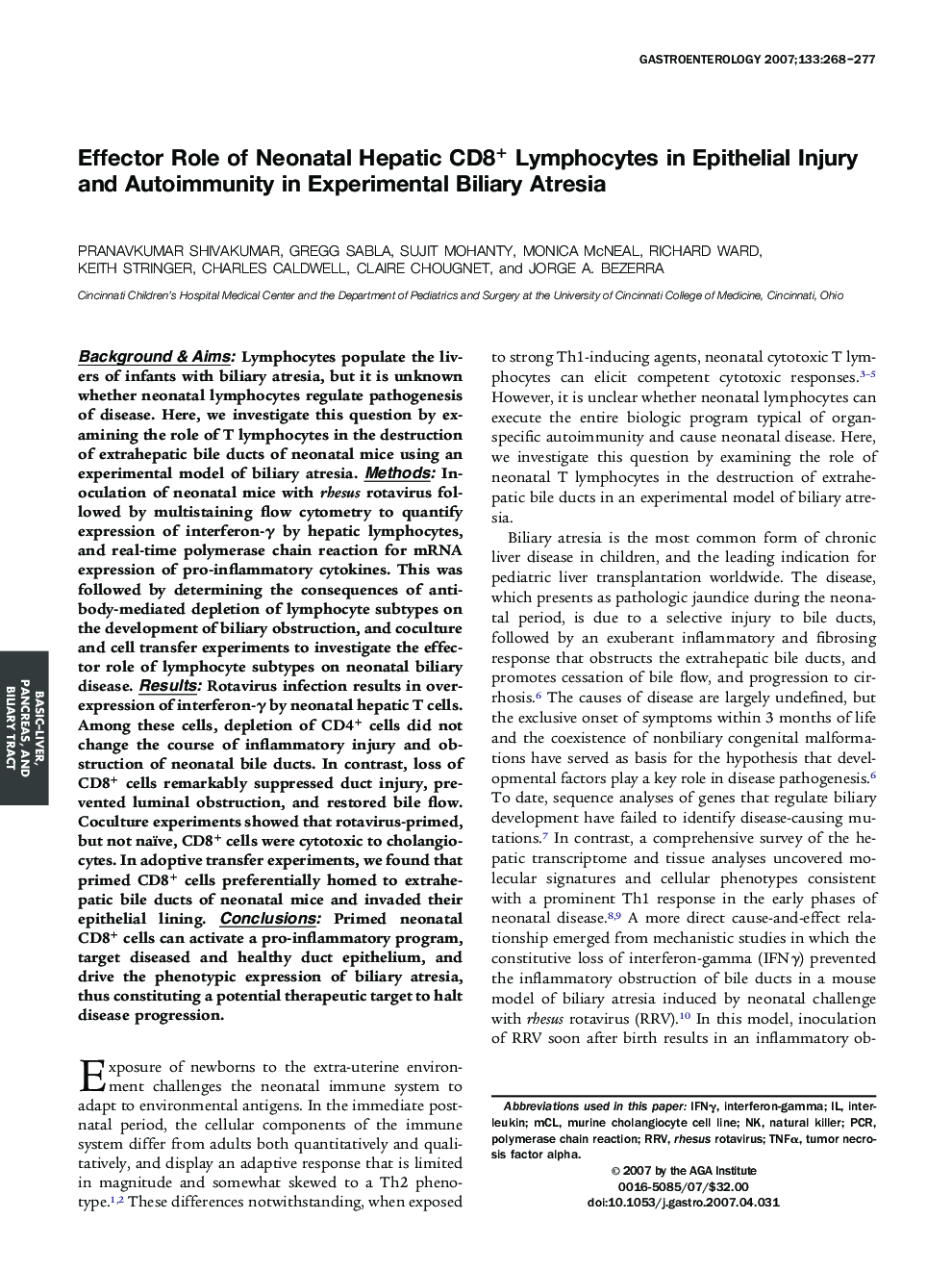| کد مقاله | کد نشریه | سال انتشار | مقاله انگلیسی | نسخه تمام متن |
|---|---|---|---|---|
| 3296775 | 1209874 | 2007 | 10 صفحه PDF | دانلود رایگان |

Background & Aims: Lymphocytes populate the livers of infants with biliary atresia, but it is unknown whether neonatal lymphocytes regulate pathogenesis of disease. Here, we investigate this question by examining the role of T lymphocytes in the destruction of extrahepatic bile ducts of neonatal mice using an experimental model of biliary atresia. Methods: Inoculation of neonatal mice with rhesus rotavirus followed by multistaining flow cytometry to quantify expression of interferon-γ by hepatic lymphocytes, and real-time polymerase chain reaction for mRNA expression of pro-inflammatory cytokines. This was followed by determining the consequences of antibody-mediated depletion of lymphocyte subtypes on the development of biliary obstruction, and coculture and cell transfer experiments to investigate the effector role of lymphocyte subtypes on neonatal biliary disease. Results: Rotavirus infection results in overexpression of interferon-γ by neonatal hepatic T cells. Among these cells, depletion of CD4+ cells did not change the course of inflammatory injury and obstruction of neonatal bile ducts. In contrast, loss of CD8+ cells remarkably suppressed duct injury, prevented luminal obstruction, and restored bile flow. Coculture experiments showed that rotavirus-primed, but not naïve, CD8+ cells were cytotoxic to cholangiocytes. In adoptive transfer experiments, we found that primed CD8+ cells preferentially homed to extrahepatic bile ducts of neonatal mice and invaded their epithelial lining. Conclusions: Primed neonatal CD8+ cells can activate a pro-inflammatory program, target diseased and healthy duct epithelium, and drive the phenotypic expression of biliary atresia, thus constituting a potential therapeutic target to halt disease progression.
Journal: Gastroenterology - Volume 133, Issue 1, July 2007, Pages 268–277